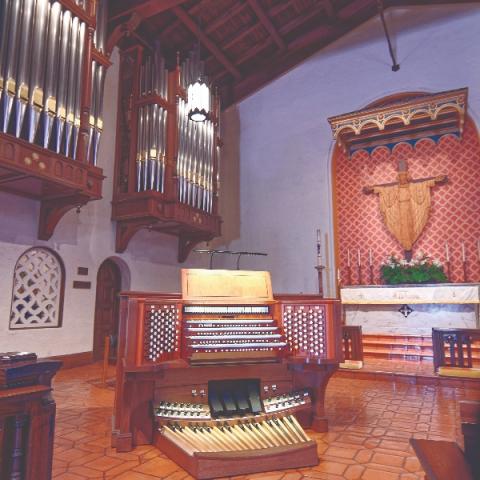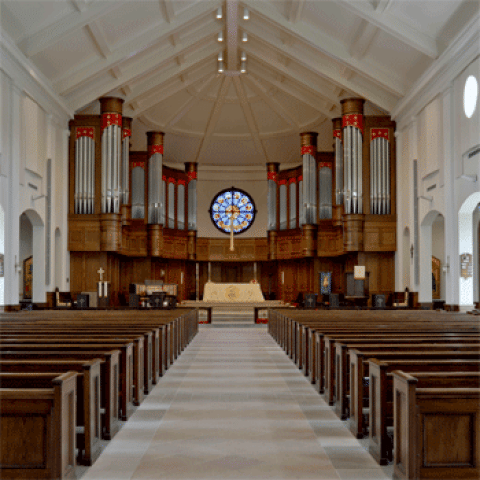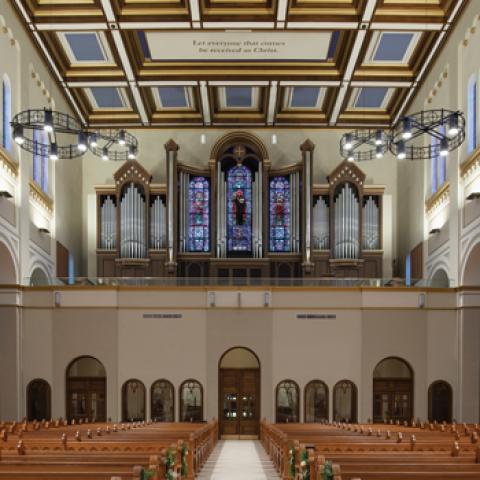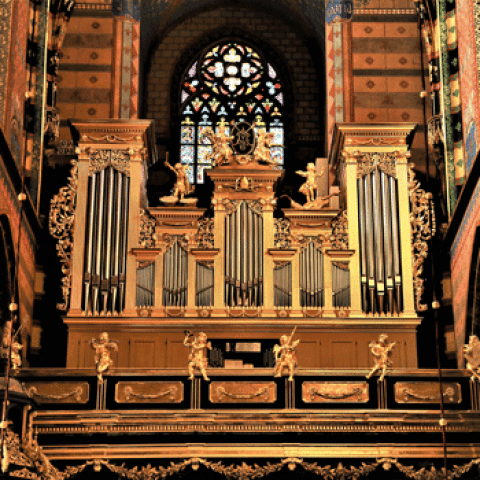
Rosales Organ Builders and Parsons Pipe Organ Builders have completed a new organ for Saint James by-the-Sea Episcopal Church, La Jolla, California (Rosales Opus 42, Parsons Opus 51): four manuals and pedal, 64 voices, 78 ranks, 104 stops, 4,562 pipes.
The four chancel cases and Antiphonal case are constructed of quarter-sawn white oak and stained to complement the church furnishings. Multiple elements from the church architecture are echoed and tied together in the cases. Façade pipes from the 16′ and 8′ Diapasons on the Great and Pedal and the 8′ Principal in the Antiphonal are of 80% tin and are polished with a fine abrasive to mute the reflectiveness of the pipes. Pipe mouths and some case elements are covered with gold leaf to help warm the color palette of the organ.
A total of 59 ranks are under expression in three enclosures. Thirty-three stops are of 8′ pitch, and sixteen of the ranks are reed pipes. Only one reed, the nautically themed Tromba Marina, is located outside of an expression box above the west door in the Antiphonal. The majority of the pipework stands on slider and tone channel windchests. The pallets are provided with pneumatic assists (balanciers) to improve action speed and repetition. The remainder of the stops play from all-electric or electro-pneumatic chests.
The new movable four-manual console is built of quarter-sawn white oak and stained to match the new cases. The interior wood is cherry with accents in African padauk. It was designed to be as low-profile as possible with a drop-sill keydesk.
Parsons Pipe Organ Builders website: parsonsorgans.com
Rosales Organ Builders website: rosales.com
The organ is featured on the cover of the September 2023 issue of The Diapason.
https://www.thediapason.com/content/cover-feature-rosales-and-parsons
Other organ builder news:







